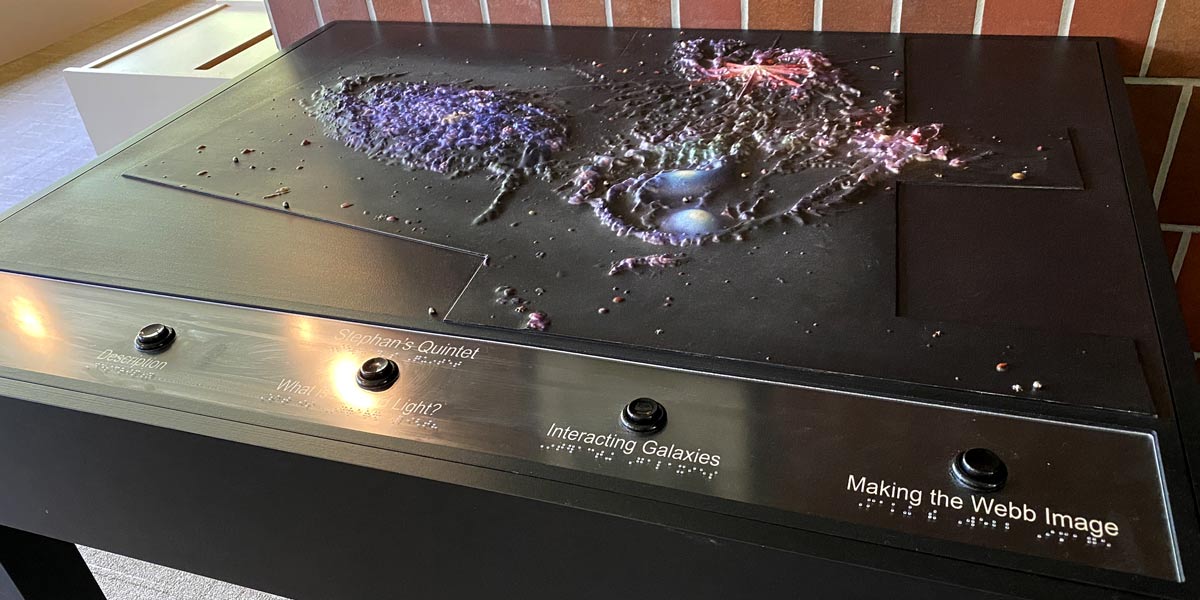One of the amazing benefits of modern astronomy is the wealth of astronomical images it gives us. From Hubble to Webb, new images appear online almost every day. They are powerful and beautiful, and so bountiful they are easy to take for granted. But those images aren’t for everyone. Whether you are visually impaired, color blind, or best process information auditorily or kinesthetically, astronomical images can be extremely limiting. Because of this, NASA’s Universe of Learning project is exploring how astronomy can be conveyed in multi-sensory ways.
The project is a collaboration of scientists, artists, and educators working together to help us hear black holes, or feel stellar nurseries. Their latest work has focused on a cluster of galaxies known as Stephan’s Quintet. If you’ve ever seen *It’s a Wonderful Life*, you’ve seen Stephan’s Quintet. It is used to represent a discussion between angels about the protagonist of the movie. The cluster was the first compact grouping of galaxies ever discovered in 1877, and since then it’s been a popular target for astronomers.
The NASA team has created several ways to explore the Quintet. You can see how the galaxies look at multiple wavelengths, and explore it in 3D. You can hear the sounds created when the colors and brightness of images are expressed as musical notes, a process known as sonification. The team has even made a tactile map of the Quintet, where students can explore the optical ridges and valleys of Stephan’s Quintet purely by feel.
While much of the focus for the project has been on the educational uses of multisensory astronomy, there are also scientific benefits. We see astronomy as images because for centuries all we could do is look at the universe. When new tools of astronomy such as radio and x-ray telescopes were created, we often used the data they gathered to create images, even though the telescopes don’t capture images the way optical telescopes do. We are visual creatures, and so images speak to us in powerful ways. But we are also sensory creatures and auditory ones. We explore the world around us using all of our senses.
So as the Universe of Learning team creates ways for us to feel galaxies and hear black holes, they give us new ways to understand the cosmos. And that’s a benefit for everyone, of all abilities.
Reference: NASA’s Universe of Learning. “Exploring Stephan’s Quintet with Multiple Senses.” 2023.

